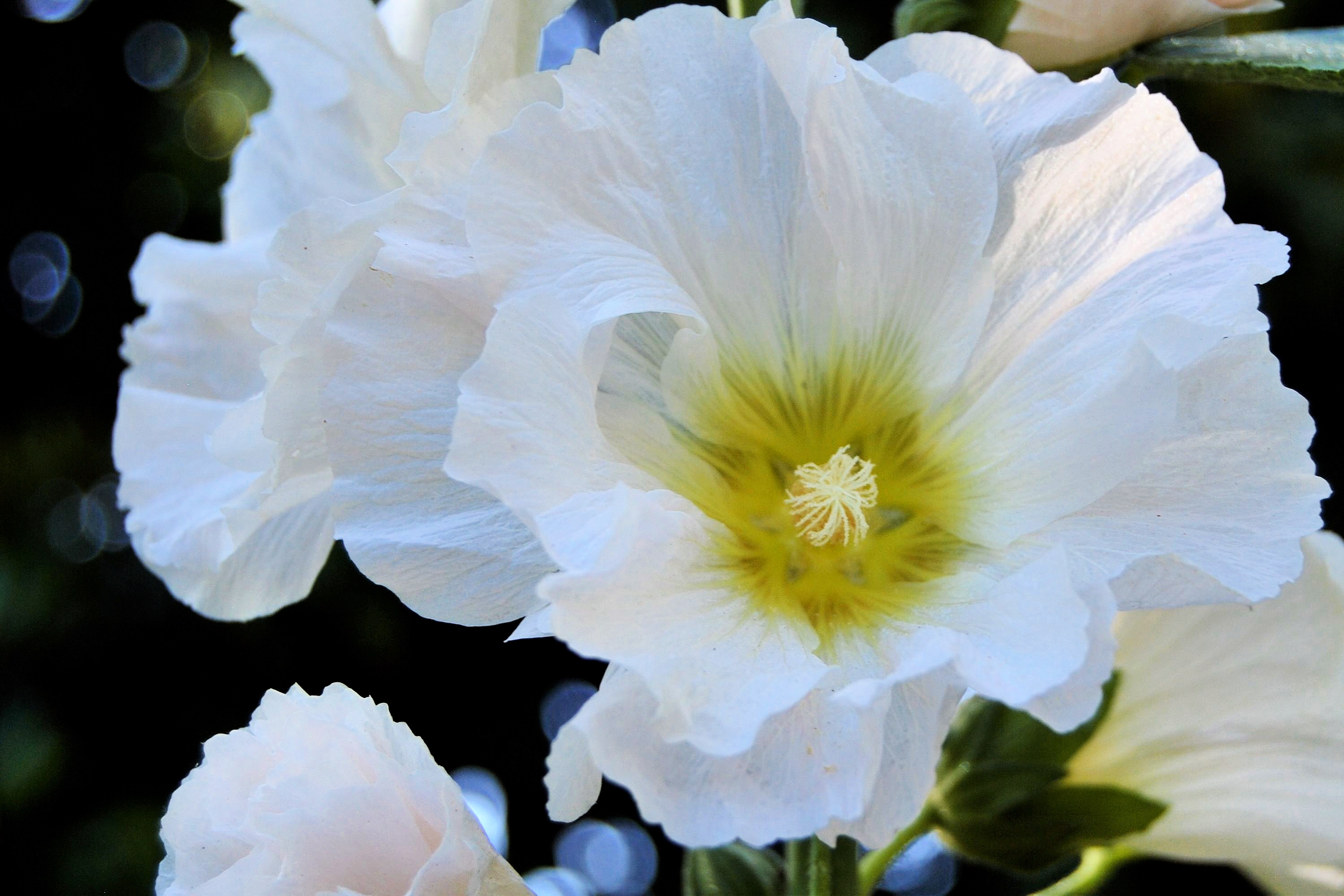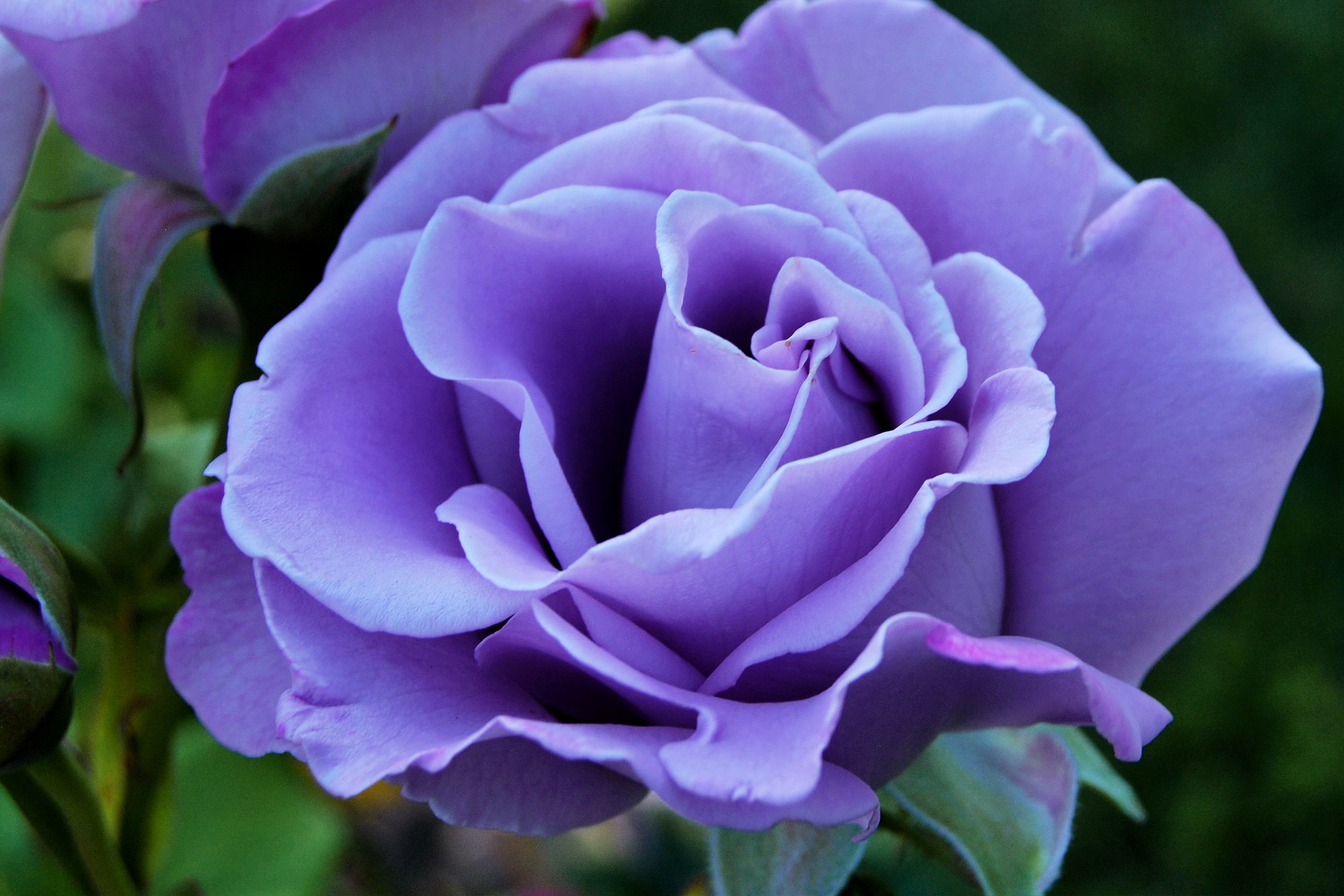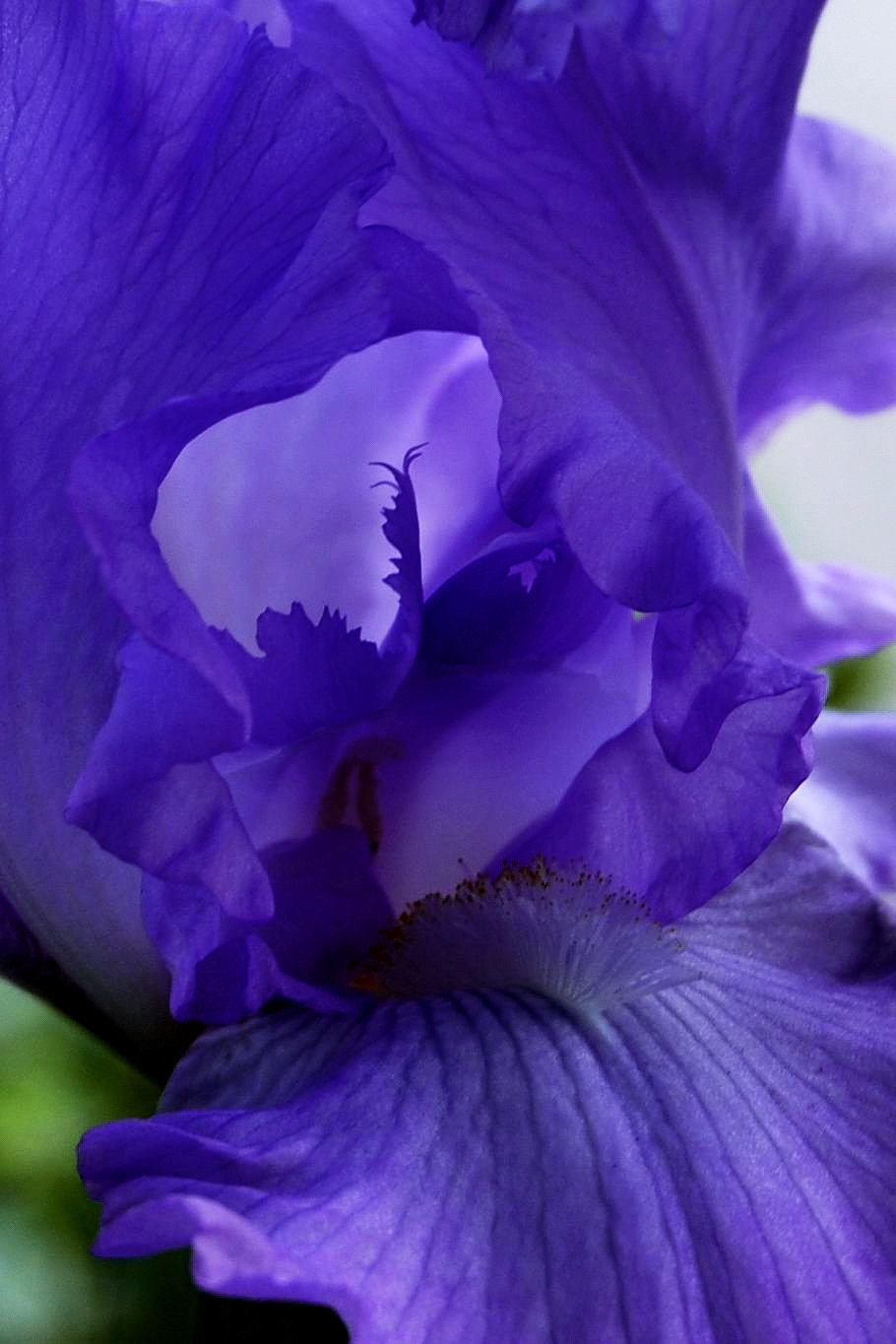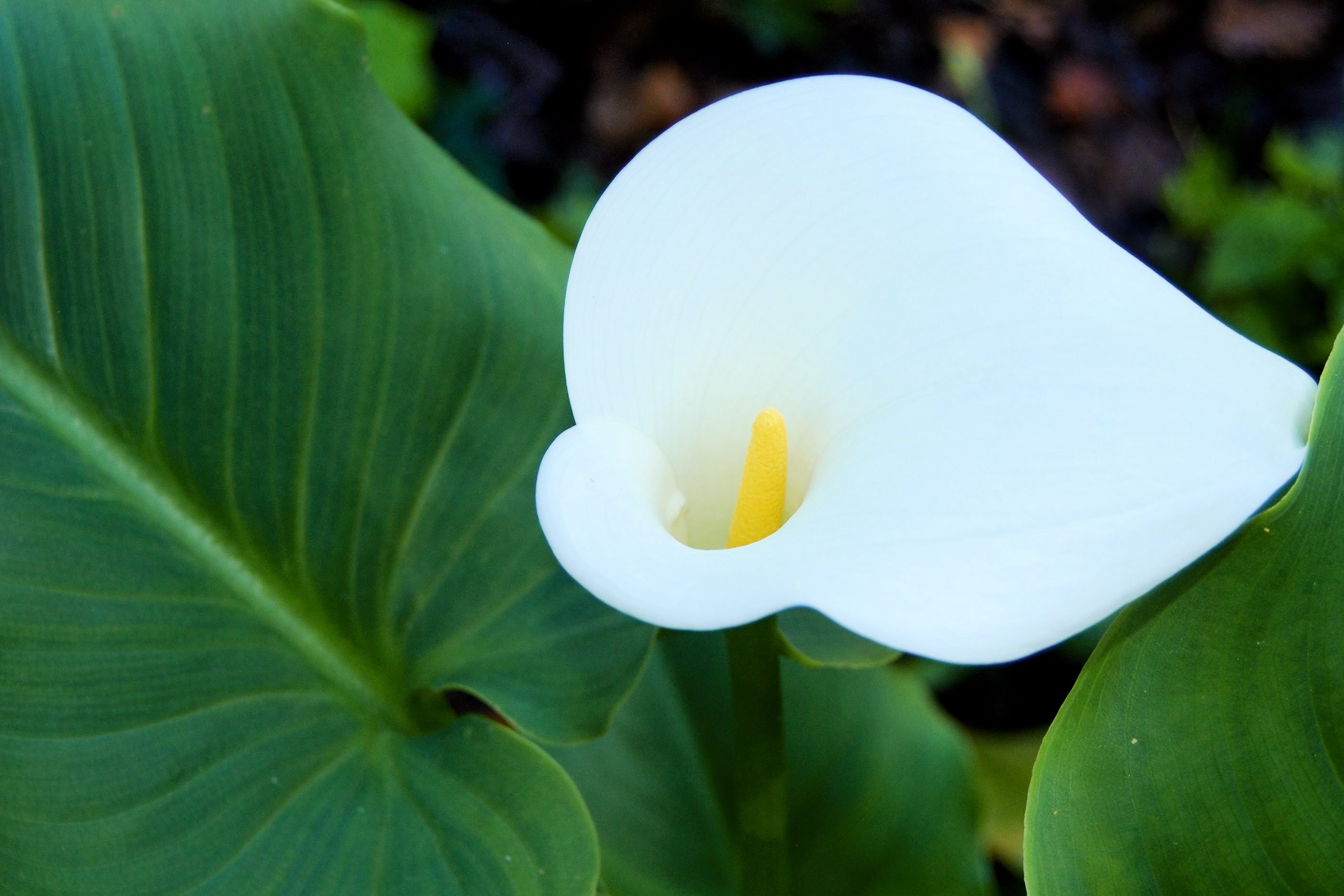A conversation with Nayaswami Chidambar, January 4, 2017
Background (by Nayaswami Rambhakta):
Ishani and I received a Christmas card from Chidambar and Amara that stopped us in our tracks with its beauty. It was a homemade card with a photo of a flower attached. I exclaimed to Ishani, “That photo is stunning – I bet it’s Chidambar’s.”
When I next saw Chidambar, I asked if we could have a conversation about his art as a possible article for Ananda Garden.
I’ve been a photographer since 1972. In the 1980s and early 1990s I was the only photographer at Ananda Village who was focused on recording Ananda as, I thought, an interesting and important event in the spiritual history of the world.
Photography is like the spiritual life – if you don’t renew it, it quickly fades. When we received Chidambar’s beautiful photo, I was eager to dive into photography from a new direction, and eager to connect with others who had found their own way to approach photography as a form of worship and service.
What follows is from the conversation that ensued, or most of it – in the other half, I shared some noteworthy events in my exploration of the arts. I’ll post those words some other time; for now, enjoy the inspiration of Chidambar’s photos in the slideshow, and his thoughts on flower photography.
Rambhakta: How did you get interested in photography?
Chidambar: When I was eight or ten, around 1956, my brother and I had little box cameras, and I would take pictures of the family, the dog, and all sorts of things – I still have some of those photos.
For a long while I put photography aside, and then about fifteen years ago I picked up a Canon and started taking pictures again, and I immediately found that there was something more in it this time. I began to feel that there was something I could share with people – there were moments that were very, very special, and I wanted to make sure that other people would be able to enjoy them, too.
About eleven years ago, I bought a basic Nikon camera that I was pleased with, and whenever Swami came to Palo Alto I would take pictures of him blessing people. Otherwise, I wasn’t much drawn to photographing people. But I began to see the joy in capturing something beautiful and sharing it.
It took a while to learn, because at first I would see something special and take a picture of it, and it wouldn’t look anything like what I had seen. It was frustrating, but as I worked with the camera and photos I began to hone in on what it was that was striking me as beautiful and worth photographing.
Before, I would look at something and say, “Oh, that’s pretty, let’s take a picture.” And I’d wind up with nothing, just a snapshot. But then I began to focus on narrowing in on what it was that had caught my eye, and I began to look for that quality more deliberately and try to take pictures of it.
It was much more rewarding, because I began to be able to pick up the qualities that were dramatic and that really spoke to me, and that I felt were worth sharing. I still enjoy sharing pictures, but whether other see them or not, I find there’s a lot of internal value in it for me.
Over time, I dropped everything else and started just taking pictures of flowers. In my work as manager of the Ananda community in Mountain View, I’d be walking through the community thinking about a project, and I might see a beautiful flower and make a note to take a picture of it later, when I had more time. But by then, of course, the moment that I wanted to capture would have passed, because the light and the arrangement of the flower and the vibration had changed.
So I began to understand how unique these moments were, and I realized that I could change the angle of the camera and get an entirely new picture. I found that I could take six or eight pictures of a flower, and it would be like absorbing my attention in different flowers. The same color, the same light, but I would see something wonderful and unique in each photo.
It wasn’t that I had learned to take dramatically better pictures. I would still throw lots of photos away, but the “keepers” would be the ones I wanted.
If you see a beautiful flower, your reaction might be, “That’s beautiful.” And then you might think, “But I’ve seen a zillion flowers,” and walk away. But every once in a while there’s something so dramatic about the presentation and shape and color and direction of the light, that your instinctive response is, “That’s astral!”
I walk around the community a lot in my work, and I see the same flowers year after year, and maybe I’ll see the same pink rose I photographed ten years ago, but with a little concentration I can see that it is entirely unique.
If you’re just wandering around, you might not notice the flower. But if you’re open and thinking about something high and inspiring, you’ll see it and have a very different reaction.
I find that this kind of appreciation makes a difference in your heart, where you begin to see the things that you’re aspiring to in your spiritual life reflected in the flower, and it moves you to a point where you want to share it.
Even so, you have to work at it – you have to really look at the flower before you take a picture. Or I’ll see it and I’ll realize that a picture isn’t going to capture it, so I’ll walk away and just tell people to go check that flower.
It’s nurturing on a spiritual level. I have more than four thousand flower photos on the computer, and sometimes I’ll click through them slowly and absorb the colors, shapes, and light. It’s so much better than watching TV, because it makes you feel better. (laughs)
Here in the community, we have mostly roses. We have some spring flowers, and some tulips that we planted a zillion years ago. They can be dramatic, and I’ll want to capture them right away, because I know that in two or three weeks they’ll be gone.
Rambhakta: Do you have thoughts about how the arts can be helpful for people who are on a spiritual path?
Chidambar: If they’re open to work with it, it can be fabulous. Most of us have a tendency to get lost in our regular groove of work. If you can bring some art into your life, it can open up a whole new universe for you. It can open up all sorts of new ways of seeing the world.
I think the arts are a wonderful thing for people on this path. When we were in Portland recently, we spent a half hour in Dana Lynne Andersen’s studio. She led us around and talked about all the things she’s done in the arts over the years, and how and why. It speaks to people very deeply, and it gets them wondering if they could have similar experiences. People come out of her workshops with some amazing new creative ideas and creations. (See also Dana’s Awakening Arts Academy website.)
Too often we lose that quality of wonder as we reach adulthood, and that ability to stop and absorb ourselves in beauty. And that’s something we need to correct, I think. You asked what it can do for us spiritually. I think it gets us out of the rational side of the brain and into the other side, where you can be perfectly content just absorbing, rather than have to be thinking all the time. Too much thinking kills the spirit.
Swami Kriyananda said, more than once, “To be spiritual, you have to be creative.” He flat-out said that if you aren’t being creative, you’re not being truly spiritual. When I first heard him say it, I thought, “Time to wake up, child!” (laughs)
You can be an artist or a business person or a writer, but it isn’t the artistic creation that’s important; it’s the intuition and feeling and knowing you’re developing, and then presenting what you’ve done. When you have an expansive frame of heart and mind, God is more able to act through you, and then it’s not just you who’s doing it all.
God does want to act through us. I’m thinking of a silly example. Helen was doing the fire ceremony on Sunday, and I was standing in the circle with the other ministers. I had watched while Asha barely missed the flames with her Lightbearer’s wrap, and then I was watching Helen, and sure enough her wrap started to catch on fire. I knew exactly what to do, because I’m trained in martial arts, but in the moment I didn’t do anything – something took over and moved through me. My arm shot out and grabbed the sleeve and held it and put out the flame. Later, I thought, “Now, wasn’t that interesting.”
That’s probably the most dramatic way I’ve experienced “something else” acting through me. Helen said later that she heard a voice say, “We can’t have that!” As if to say, “We can’t have our ministers’ robes catching fire – it’s not part of the ceremony!” (laughs)
With creativity, I figure it allows that “something else” to move through us. We see it when Asha speaks – where we suddenly realize that she’s saying something important for us, that it’s something we’ve been thinking about, or an issue we’re dealing with.
Rambhakta: Do you go to Crystal Hermitage in the spring when the flowers are blooming?
Chidambar: For several years we’ve gone up for the big open house when the tulips are in bloom, They tend to put me in the parking lot, helping to park cars. (laughs) But I always make sure I get a chance to hang out with the flowers. The first time I went to see the tulips, in 1991, it was like being in another world. My mind was vaporized and merged in the tulips – I had never experienced anything like it. I’ve come close to capturing that feeling again, but the first time I saw those Crystal Hermitage flowers, I was way out over the edge.
Follow this link for information about the Crystal Hermitage Tulip Open House in April. (A specific Open House date is not yet scheduled for 2017.)










































Excellent and uplifting work, Chidambar and Rambhakta!!! Loved the article.
Your flowers and your words certainly open the heart and touch the soul, Chidambar. Thank you.
Thanks for sharing, Chidambar. A beautiful showing, seasoned with wisdom.
Thank you for your love and sharing Gods Beauty !